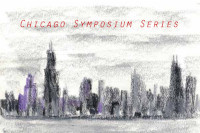Michigan State University
Visual imagery is ubiquitous in science and a powerful tool for conveying science to both experts and novices. In general, scientists initially create images to convey information to each other; these images are often simplified and enhanced before being used to convey information to students and the general public. Both the science of image design and visual literacy, the extent to which people can understand images, are often missing in the image development process. Without considering these, the potential for misinterpretations of science to unintentionally arise cannot be underestimated. This plenary will provide an overview of several years of research on visualization and learning, from fundamental cognitive studies of visuospatial working memory to eye tracking investigations of person-image interactions. In particular, we will focus on three expert-novice studies: 1) A study of geologic mapping expertise, including analysis of the role of spatial visualization in expert and student cognition; 2) An eye tracking- and interview-based investigation of expert-novice interactions with common geologic maps and images, revealing striking perceptual and cognitive differences as a function of color palette and expertise level; and 3) A survey study revealing the expectations for visual literacy that faculty bring to non-major and major classrooms.
Julie Libarkin is currently an Associate Professor at Michigan State University, with a joint appointment in the Department of Geological Sciences and the Division of Science and Mathematics Education. Julie began her career studying geology and physics at the College of William and Mary, and received a PhD in geosciences from the University of Arizona with emphasis in paleomagnetism and cosmogenic isotopes. Upon graduation, she immediately began a National Science Foundation Postdoctoral Fellowship in Science, Mathematics, Engineering, and Technology Education. This fellowship provided an opportunity for Julie to switch her research emphasis from tectonics to geocognition, the investigation of how people perceive and understand the Earth and Earth phenomena. During this time, Julie moved to the Science Education Department at the Harvard-Smithsonian Center for Astrophysics, served for a short time as a research scientist at the Center, and worked for three years as an Assistant Professor at Ohio University before her move to Michigan State University. Julie is the 2009-2011 Editor-in-Chief for the Journal of Geoscience Education. Currently, Julie's research focuses on cognition, assessment, and spatial visualization, including the nature of expertise and includes collaborative research on working memory capacity, visualization, and climate change cognition.

